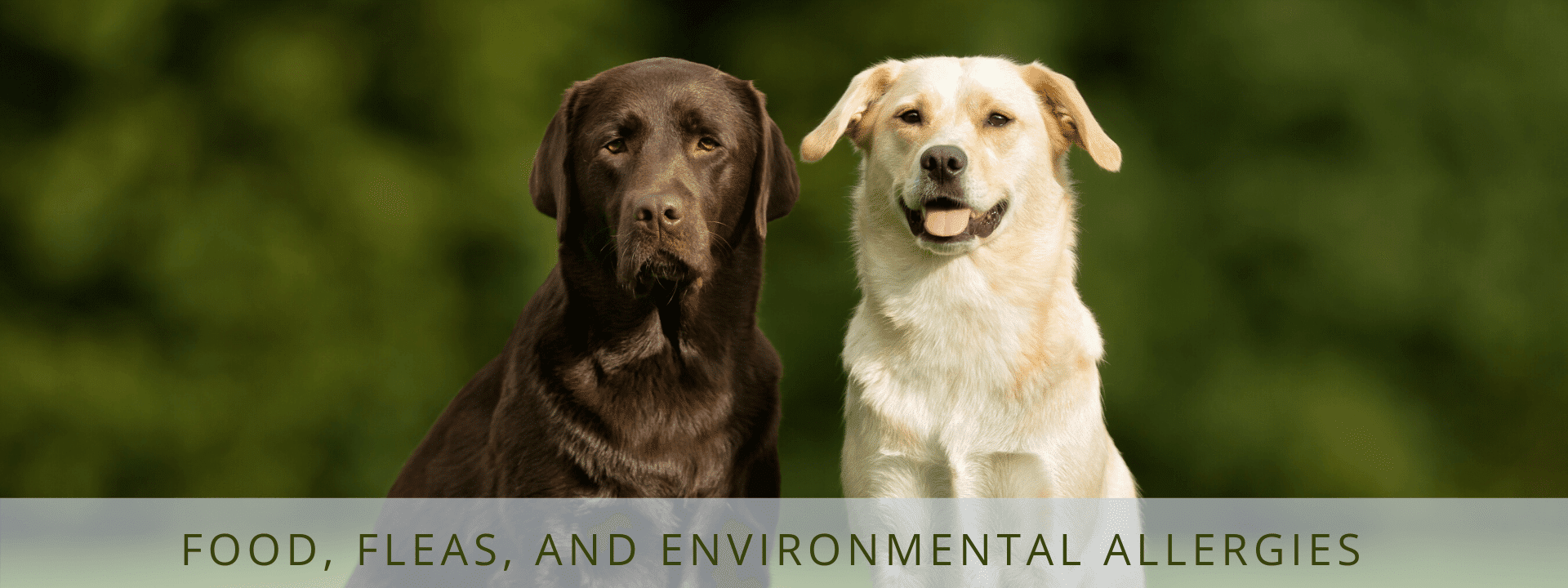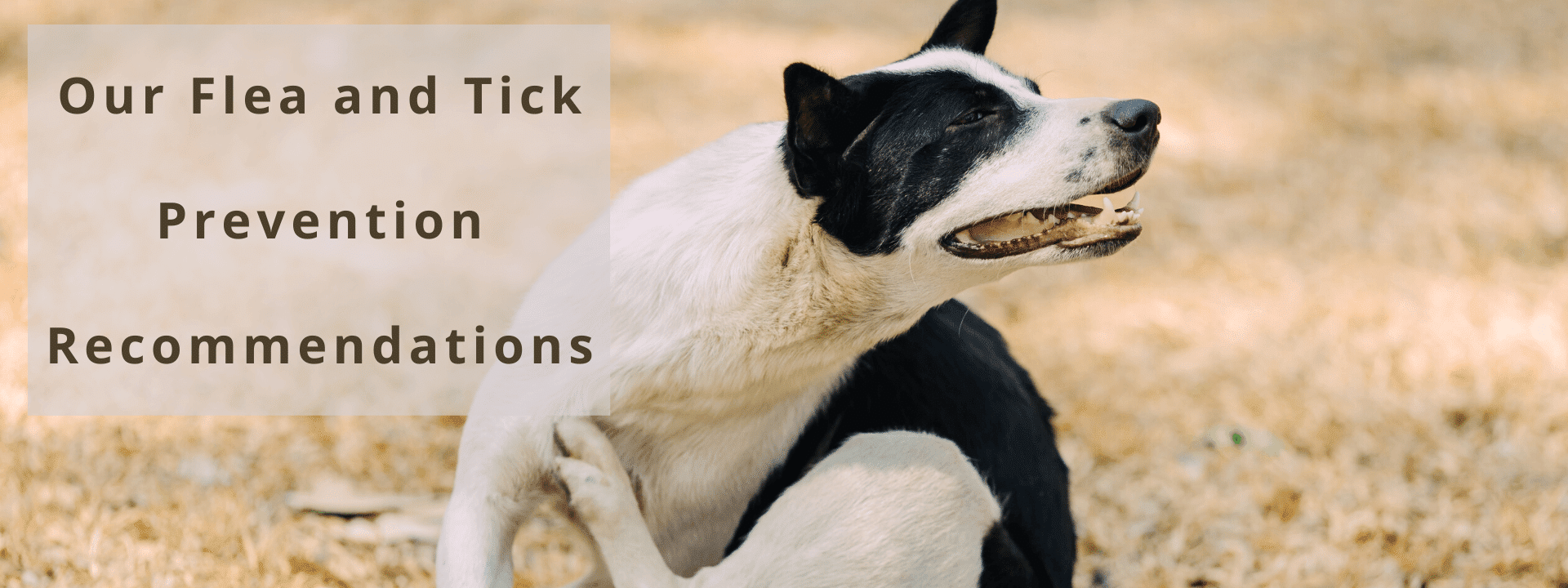When looking at allergies, I personally look at them in three different categories. We have food allergies, we have flea allergies, and we have environmental allergies. That’s the one that gets a little bit sticky because there are so many things that dogs can be allergic to, but we’ll get to that.
What Type of Food Are Dogs Most Allergic To?
Let’s start at the top. With food allergies, usually, in my experience, it’s the protein that’s in the foods that pets are eating that triggers the allergic response. When it comes to your average dog food, most of them contain chicken as the primary ingredient. I’m not blaming chicken as the cause for all food allergies, but it is common and commonly used. If your dog is allergic to a certain pet food, you will want to switch to a different protein source. There are lamb and rice, duck and potato, kangaroo and oats, fish and chips. There are all kinds of different things that you can offer.
Is There a Certain Type of Pet Food That’s Good For Allergies?
You can switch those up, but if you really want to play hardball, what I do is I use and recommend is Hills ZD…free plug for Hills on this one because I really love this food! It contains synthetic proteins. Why is that important? Because they’re incredibly small. Usually, it’s the size of the protein molecule that enables the allergic reaction to be elicited and these guys are so small that they cannot do such a thing. In theory, a dog that is reacting to a protein molecule should not or will not react to the proteins that are in ZD.
How Do I Know if My Dog is Allergic to Fleas?
The next thing would be flea allergies. Pretty self-explanatory there. What happens is, understand, it’s not just that any dog that has fleas is allergic to them. Look, I don’t like getting bitten by fleas and I’m probably going to scratch and get little red bumps, but a dog that’s truly allergic is going to truly flair up and typically near their rear area. In fact, there was a song. If a dog walks in with an itty bitty waist and a bald patch on your, never mind. That’s a different song. Sorry, but flea allergies normally come in with a big bald patch on the dog’s lower back and maybe the backs of their thighs. Something like that. Pretty classic pattern. When they walk in with that, before I even start examining the dog, I’m looking for a flea because it’s that common and that consistent with what it affects.
The point in story is this, if they’re not on routine flea prevention and good flea prevention, you’re going to be fighting that battle all the time, especially in the spring and summer when fleas are so common. What do we do? See last week’s video. Some of the preventatives we use, whether it’s the topical ones or like Bravecto I have here, you want something that’s going to prevent and provide good around-the-clock flea prevention. These are some of the best things that money can buy right now.
What Are Environmental Dog Allergies?
Third and final thing—environmental allergies…and that’s where it gets a little bit hairy. Dogs can be allergic to anything under the sun, quite literally the same as you and me. It can be dust. It can be pollen. It can be mold. It can grass. You name it, and they can be allergic to it. How do we address it? Some people want to go the whole nine yards and do allergy testing and I’m all for it.
There are two ways you can allergy test a dog. One, you can pull blood and run serum allergy testing. Number two is you can do intradermal allergy testing. That’s a little bit more invasive because the dog has to be on a general anesthetic and a dermatologist has to do that when they inject the allergens under the skin and measure how much the dog reacts to them. Whichever way you choose to go, what the dermatologists do with that information is they then turn around and make a vaccine that contains the top two, three, five, 10, or whatever number of ingredients that the dog’s allergic to.
Once that’s done, the staff starts giving allergy injections anywhere from weekly to monthly. It’s a long process. It’s a little bit of a pricey process, but it’s the only way that you can try to get to the actual root of that dog’s allergic problem.
How Do I Get My Dog to Stop Itching?
What most people do is they come in and say, “Just make my dog stop itching.” How do we do that? Well, for a thousand years it’s been steroids and steroids still work. They don’t tell you what they’re itching from, but it will make the problem lesser. They’re not my first choice anymore because of the two products I’m about to tell you about. If you have not used or heard of these, well you will right now and they are fantastic.
Apoquel is an oral medication that you can give twice a day for the first two weeks and then once a day after that, but this is the newest therapy. This is what’s called monoclonal antibody therapy. Yes. It’s a mouthful, but here’s the deal. When you are allergic to something, your body sends messengers to your brain to say, hey, you’ve got to start itching. This product is antibodies against those chemical messengers. It blocks what’s called interleukins, so they can’t send their message.
I hold in my hand a little tiny vial of Cytopoint. Cytopoint is in the same family as Apoquel. It’s just more pinpoint. Hence, maybe the name, Cytopoint. The difference being Cytopoint works only for environmental allergies and the interleukin Apoquel covers all allergic causes of itching, including food, fleas, or environmental.
So that is kind of it in a nutshell, guys. Thanks for tuning in! If you have any questions, reach out to us at the office. I can answer any questions you may have! Take care and have a great day!
-Dr. Scott
To schedule an appointment call (337) 223-9581








